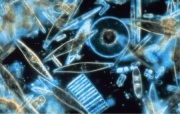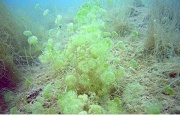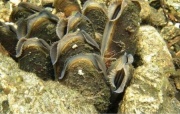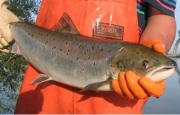Difference between revisions of "BQE"
(→Biological Quality Elements (BQE)) |
|||
| (6 intermediate revisions by 2 users not shown) | |||
| Line 8: | Line 8: | ||
| || || || | | || || || | ||
|- | |- | ||
| − | | [[Image:BQE_phytoplankton.jpg|180px]] <ref>[http://en.wikipedia.org/wiki/Phytoplankton Wikipedia. Phytoplankton]</ref>|| [[Image:BQE_macrophytes.jpg|180px]] <ref>[http://www.wiser.eu | + | | [[Image:BQE_phytoplankton.jpg|180px]] <ref>[http://en.wikipedia.org/wiki/Phytoplankton Wikipedia. Phytoplankton]</ref>|| [[Image:BQE_macrophytes.jpg|180px]] <ref>[http://www.wiser.eu/ WISER Project EU]</ref>|| [[Image:BQE_benthic_invertebrates.jpg|180px]] <ref>[http://www.internetstones.com/abernethy-pearl-little-willie-freshwater-scottish-margaritifera.html Internet Stones. Pearl Mussels, ''Margaritifera Margaritifera'']</ref>|| [[Image:BQE_fish.jpg|180px]] <br><br> |
|} | |} | ||
<br /> | <br /> | ||
| − | Using | + | Using [[biological quality elements as indicators of hydromorphological degradation]] turns out to remain difficult. Improvements might be possible when using trait-based metrics [[Trait-based metrics]] instead of metrics based on species identity. [[Shortcomings in standard monitoring|Monitoring needs to be improved too]]. Nonetheless, [[Why aren’t relationships stronger?|unclear relationships ]] between hydromorphological degradation and biota seem inevitable. Therefore REFORM recommends, with the current level of knowledge, using the hydromorphological method directly for ecological class assessment, circumventing the use of biological indicators. |
| − | Further reading: REFORM deliverables [ | + | Further reading: REFORM deliverables [[media:3.1 Impacts of HyMo degradation on ecology 0.pdf|D3.1]], [[media:3.2_Biological_responses_to_degraded_HyMo_and_multiple_stress.pdf|D3.2]], [[media:3.3_Evaluation_of_candidate_hydromorphology_indicators.pdf|D3.3]] and [[media:3.4 Guidance to detect impact of HyMo degradation on riparian ecosystems.pdf|D3.4]]. |
==References== | ==References== | ||
Images taken from: | Images taken from: | ||
<references/> | <references/> | ||
Latest revision as of 11:49, 3 January 2019
Biological Quality Elements (BQE)
The ecological status of a river can be assessed by evaluating indicators for the composition, abundance, species diversity or absence of various groups of organisms known as “biological quality elements”. Four biological quality elements are used for rivers: algae (phytobenthos), macrophytes, macroinvertebrates and fish.
| Phytoplankton | Macrophytes and phytobenthos | Benthic invertebrates | Fish |
 [1] [1] |
 [2] [2] |
 [3] [3] |
 |
Using biological quality elements as indicators of hydromorphological degradation turns out to remain difficult. Improvements might be possible when using trait-based metrics Trait-based metrics instead of metrics based on species identity. Monitoring needs to be improved too. Nonetheless, unclear relationships between hydromorphological degradation and biota seem inevitable. Therefore REFORM recommends, with the current level of knowledge, using the hydromorphological method directly for ecological class assessment, circumventing the use of biological indicators.
Further reading: REFORM deliverables D3.1, D3.2, D3.3 and D3.4.
References
Images taken from: